Intentar ORO - Gratis
The Race Is Set
Cobblestone American History Magazine for Kids
|February 2017
In 1857, Abraham Lincoln was the lawyer in a case for the Rock Island Bridge Company. The company had built one of the first railroad bridges across the Mississippi River. When a ship crashed into the bridge, the ship owner sued the company, claiming that the bridge obstructed free navigation of the river. The case was dismissed after the jury was deadlocked, but during it, Lincoln made an argument for the national support of “rail travel from East to West.”

The nation needed a reliable method to connect its two coasts. The addition of the Oregon Territory in 1846 and the Mexican Cession in 1848 had given the United States control of the West Coast. In the decade that followed, discoveries of gold in California and silver in Nevada attracted large numbers of miners and settlers to the West.
Lincoln had grown up on the frontier, and he had traveled as a lawyer—by horseback—in the Midwest. He knew how difficult it was to get around. He believed that a transcontinental railroad would provide that much-needed physical link, but it raised other questions: What route should it follow? Where should the eastern terminus be? Could private companies manage such a massive undertaking? And what role, if any, should the federal government play?
After winning election as president in 1860, Lincoln took the first step to provide answers to some of those questions. He signed the Pacific Railway Act on July 1, 1862. It established the federal government’s support for a transcontinental railroad along a north-central route close to the 42nd parallel. The act called for building a telegraph line parallel to the railroad line. The government reserved the right to use both lines for national purposes, such as to deliver news, to carry mail, and to transport the military. It invested the president with the authority to determine where the eastern leg would begin. Lincoln named Council Bluffs, Iowa, but construction began across the Missouri River in Omaha, Nebraska. Lincoln also decided that the railroad’s standard gauge, or width between the two rails, would be four feet eight and a half inches.
Esta historia es de la edición February 2017 de Cobblestone American History Magazine for Kids.
Suscríbete a Magzter GOLD para acceder a miles de historias premium seleccionadas y a más de 9000 revistas y periódicos.
¿Ya eres suscriptor? Iniciar sesión
MÁS HISTORIAS DE Cobblestone American History Magazine for Kids
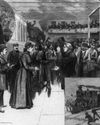
Cobblestone American History Magazine for Kids
nellie Bly Journalist
nellie Bly's first newspaper articles appeared in print when she was just 20 years old.
2 mins
Cobblestone February 2025: Women Trailblazers of the 1800s

Cobblestone American History Magazine for Kids
Arabella Mansfield -Lawyer
Arabella Mansfield started out life as Belle Babb (1846-1911). She grew up in a Midwest family that valued education. In 1850, her father left to search for gold in California. He died in a tunnel accident a few years later.
2 mins
Cobblestone February 2025: Women Trailblazers of the 1800s
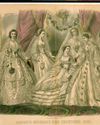
Cobblestone American History Magazine for Kids
Sarah Josepha Hale Editor
Long before Vogue or Glamour caught women's attention, Godey's Lady's Book introduced the latest fashions.
3 mins
Cobblestone February 2025: Women Trailblazers of the 1800s

Cobblestone American History Magazine for Kids
Louise Blanchard Bethune - Architect
Louise Blanchard Bethune (1856-1915) showed early promise in math. Lucky for her, her father was the principal and a mathematics teacher in a school in Waterloo, New York. Instead of going to school, Louise's father taught her at home until she was 11 years old. She also discovered a skill for planning houses. It developed into a lifelong interest in architecture and a place in history as the first professional female architect in the United States.
2 mins
Cobblestone February 2025: Women Trailblazers of the 1800s
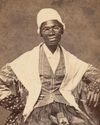
Cobblestone American History Magazine for Kids
Sojourner Truth Speaker
There was a time when slavery wastes abolished the institution over a number of decades. New York abolished slavery in 1827. Isabella Baumfree (c. 1797-1883) was born enslaved in Hurley, New York. When she was nine, she was taken from her parents and sold. She then was sold several more times. Some of her owners were cruel and abused her. During that time, she had several children.
1 mins
Cobblestone February 2025: Women Trailblazers of the 1800s
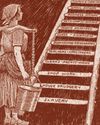
Cobblestone American History Magazine for Kids
Getting Started
In this editorial cartoon, a young 19th-century woman must overcome the obstacle of carrying a heavy burden while climbing a multirung ladder before she can achieve \"Equal Suffrage.\"
2 mins
Cobblestone February 2025: Women Trailblazers of the 1800s
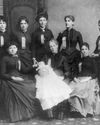
Cobblestone American History Magazine for Kids
Leonora M. Barry - Investigator
When Leonora M. Barry (1849-1923) was a young girl, her family left Ireland to escape a famine. They settled in New York. Barry became a teacher. In 1872, she married a fellow Irish immigrant. At that time, married women were not allowed to work. So, Barry stayed home to raise their three children.
2 mins
Cobblestone February 2025: Women Trailblazers of the 1800s

Cobblestone American History Magazine for Kids
Finding a New Path
For many Americans, this month's mystery hero represents the ultimate modern trailblazer. She is recognized by just her first name.
1 min
Cobblestone February 2025: Women Trailblazers of the 1800s
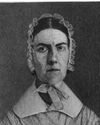
Cobblestone American History Magazine for Kids
The Grimké Sisters Abolitionists
Every night, Dinah was supposed to brush the E hair of her mistress, Sarah Moore Grimké (1792-1873). But one night, 12-year-old Sarah stopped Dinah. She wanted to help Dinah instead. They had to be quiet so they wouldn't get caught. It was 1804 in Charleston, South Carolina. The Grimkés were among Charleston's major slaveholding families. Strict laws regulated the behavior of both master and enslaved people.
4 mins
Cobblestone February 2025: Women Trailblazers of the 1800s
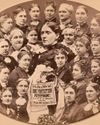
Cobblestone American History Magazine for Kids
Frances Willard Leader
During Frances Willard's lifetime (1839-1898), she was the best-known woman in America: She headed the largest women's organization in the worldthe Woman's Christian Temperance Union (WCTU). In that role, her abilities shone as a social activist, a dynamic speaker, and a brilliant organizer. She educated women on how to run meetings, write petitions, give speeches, and lobby state and federal legislators.
2 mins
Cobblestone February 2025: Women Trailblazers of the 1800s
Translate
Change font size
